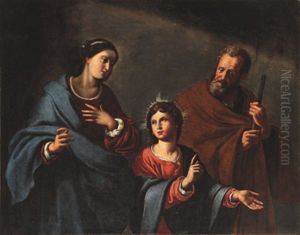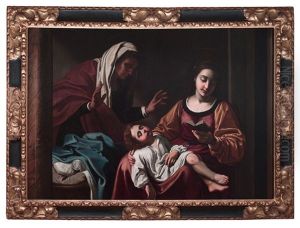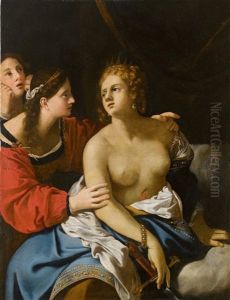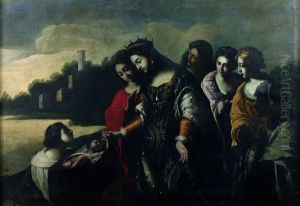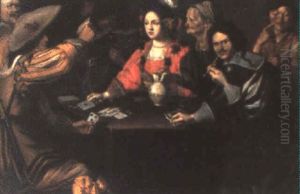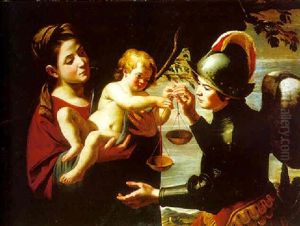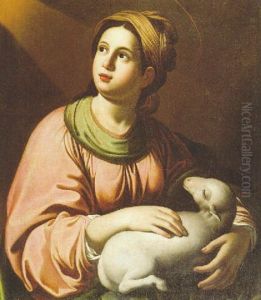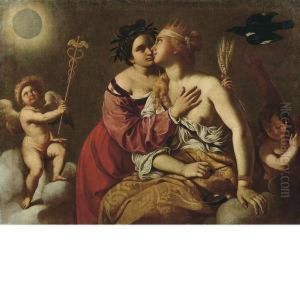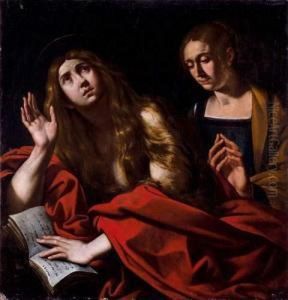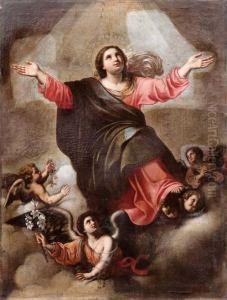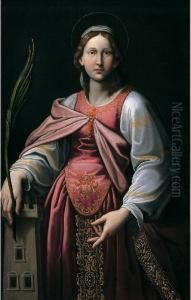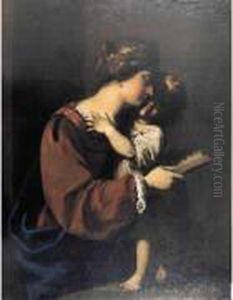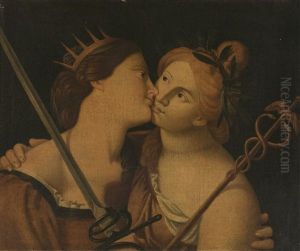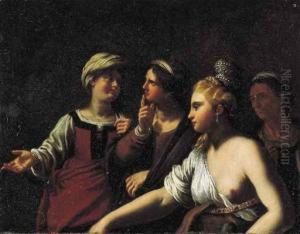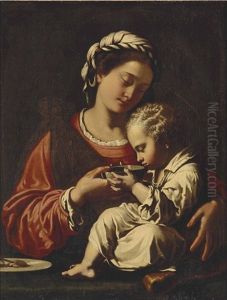Antiveduto Grammatica Paintings
Antiveduto Grammatica was an Italian painter born in 1571 in Siena, Italy. He is known as one of the early representatives of the Baroque painting style, which was characterized by its emotional intensity, dynamic compositions, and dramatic use of light and shadow. Grammatica's early life is not well documented, but it is believed that he moved to Rome as a young man, which was a major center for artistic development at the time.
In Rome, Grammatica became a pupil of the painter Giovanni Domenico Angelini and was influenced by the works of the renowned artists of the period, such as Caravaggio and his followers. Grammatica's own style, however, did not entirely embrace Caravaggio's dramatic chiaroscuro; instead, he developed a softer and more luminous approach to his subjects, often focusing on religious themes and portraits. His works are known for their clarity of form and color, as well as their serene and contemplative nature.
Grammatica's career was marked by his success as a portraitist, and he received commissions from several high-ranking church officials and members of the Roman aristocracy. Among his known works are the 'Annunciation' in the church of San Giovanni dei Fiorentini in Rome and the 'Crucifixion' for the church of Santo Spirito in Sassia. Despite his success, there is relatively little information available about his personal life.
Antiveduto Grammatica died in 1626 in Rome. While his works were somewhat overshadowed by the more prominent figures of the Baroque era, his contributions to the development of early Baroque art in Rome have been recognized and appreciated in later art historical scholarship. Today, his paintings can be found in various museums and collections, offering insight into the transitional period of Roman art as it moved from the Mannerist style into the Baroque.






